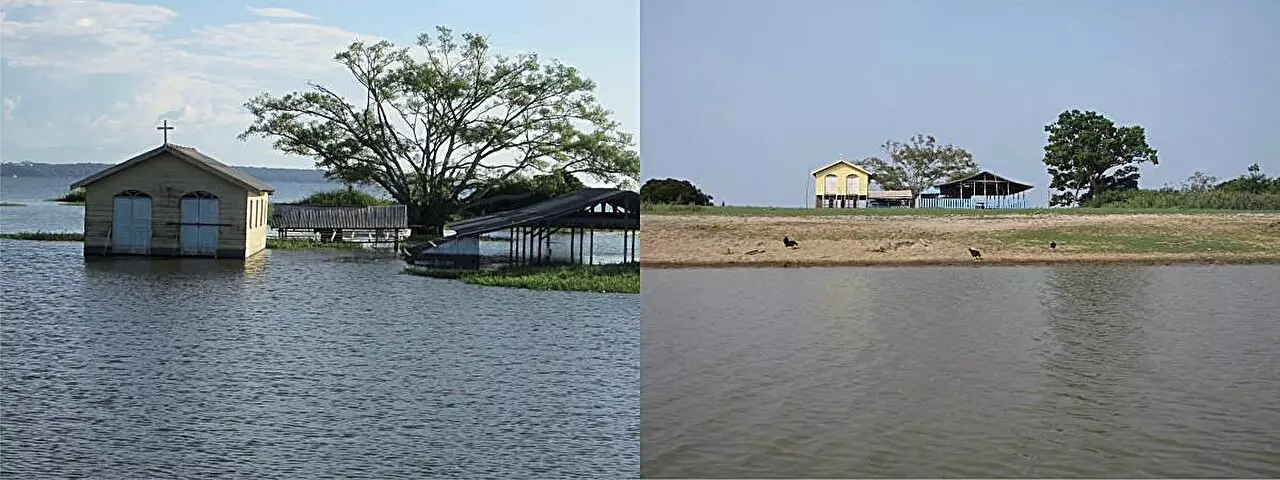The Amazon Rainforest, often referred to as the “lungs of the Earth,” is facing unprecedented challenges due to climate change. A recent study by researchers at the University of São Paulo (USP) uncovers alarming revelations about how shifting temperature and humidity levels are expected to impact methane-producing microorganisms within this vital ecosystem. The ramifications extend beyond the region, potentially influencing global greenhouse gas emissions. With over 800,000 square kilometers of Amazonian floodplains submerged for half the year, the urgency for effective conservation policies and climate action is more critical than ever.
Methane, a potent greenhouse gas, is released during the breakdown of organic matter by microbial communities in wetland environments. Interestingly, Amazonian floodplains are currently responsible for around 29% of global wetland methane emissions. While this highlights their role as significant contributors to atmospheric methane levels, the upland forests serve as vital methane sinks, absorbing this gas from the atmosphere and helping to mitigate climate change. The delicate balance between these two microbial communities is at risk of being disrupted by the extreme weather associated with climate change.
The recent findings reported in the journal Environmental Microbiome reveal that the increase in floodplain methane-producing microorganisms could signal a future crisis. Researchers employed advanced genetic sequencing techniques to assess the changes in microbial communities amid variable temperature and humidity. As noted by postdoctoral researcher Júlia Brandão Gontijo, the team found that, although methane emissions did not fluctuate dramatically during their experiment, an increase in methane-producing microorganisms could pose future challenges for greenhouse gas management.
The study was anchored in rigorous fieldwork, conducted over a 30-day period, in Santarém and Belterra—two municipalities in the Pará state of Brazil. The researchers simulated extreme temperature conditions of 27°C and 30°C, combined with fluctuating humidity to analyze the responses of both floodplain and upland forest soil samples. By using real-time quantitative PCR alongside genetic sequencing, they could effectively identify and quantify the microorganisms responsible for methane production and consumption.
Surprisingly, while the study did not observe significant shifts in overall methane emissions from floodplain soils, the increased presence of methane-producing microorganisms was alarming. This suggests adaptability in the flooded areas, which may exacerbate methane emissions in response to the further climatic extremes foreseeable in the future.
In stark contrast, the study demonstrated a substantial decline in methane consumption from upland forest soils, dropping by a staggering 70% under warmer, drier conditions. These findings indicate heightened sensitivity to climate variability in these ecosystems. The potential imbalance between the two environments—floodplains generating methane and upland forests losing their capacity to absorb it—could lead to a concerning rise in net methane emissions.
The susceptibility of upland forest microbiomes raises critical questions about the ecological resilience of the Amazon as a whole. It becomes increasingly clear that maintaining this balance is essential for regulating the forest’s vital role in global greenhouse gas management.
With the study’s illuminating findings, the team is compelled to delve deeper into field experiments and laboratory work that will explore the intricacies of methane cycling in the Amazon. Identifying and leveraging methanotrophic microorganisms that can use methane as an energy source may offer a pathway to counterbalance the anticipated uptick in methane emissions.
Moreover, the implications of their research extend into the realm of public policy. The data provided by Gontijo and her collaborators can serve as critical knowledge for policymakers tasked with developing strategies around conservation and climate change mitigation. As the Amazon’s climate continues to shift, proactive management strategies rooted in scientific insight could prove vital for preserving both local and global ecosystems.
The staggering effects of climate change on the Amazon Rainforest and its microbial communities underscore an urgent global concern. As both methane emissions increase and the forest’s ability to absorb this greenhouse gas decreases, the potential consequences for climate stabilization will be profound. The findings from USP serve as a clarion call for enhanced conservation measures and further research. Failure to address these pressing ecological challenges may lead not only to a crisis in the Amazon but also to lasting repercussions for our entire planet.


Leave a Reply